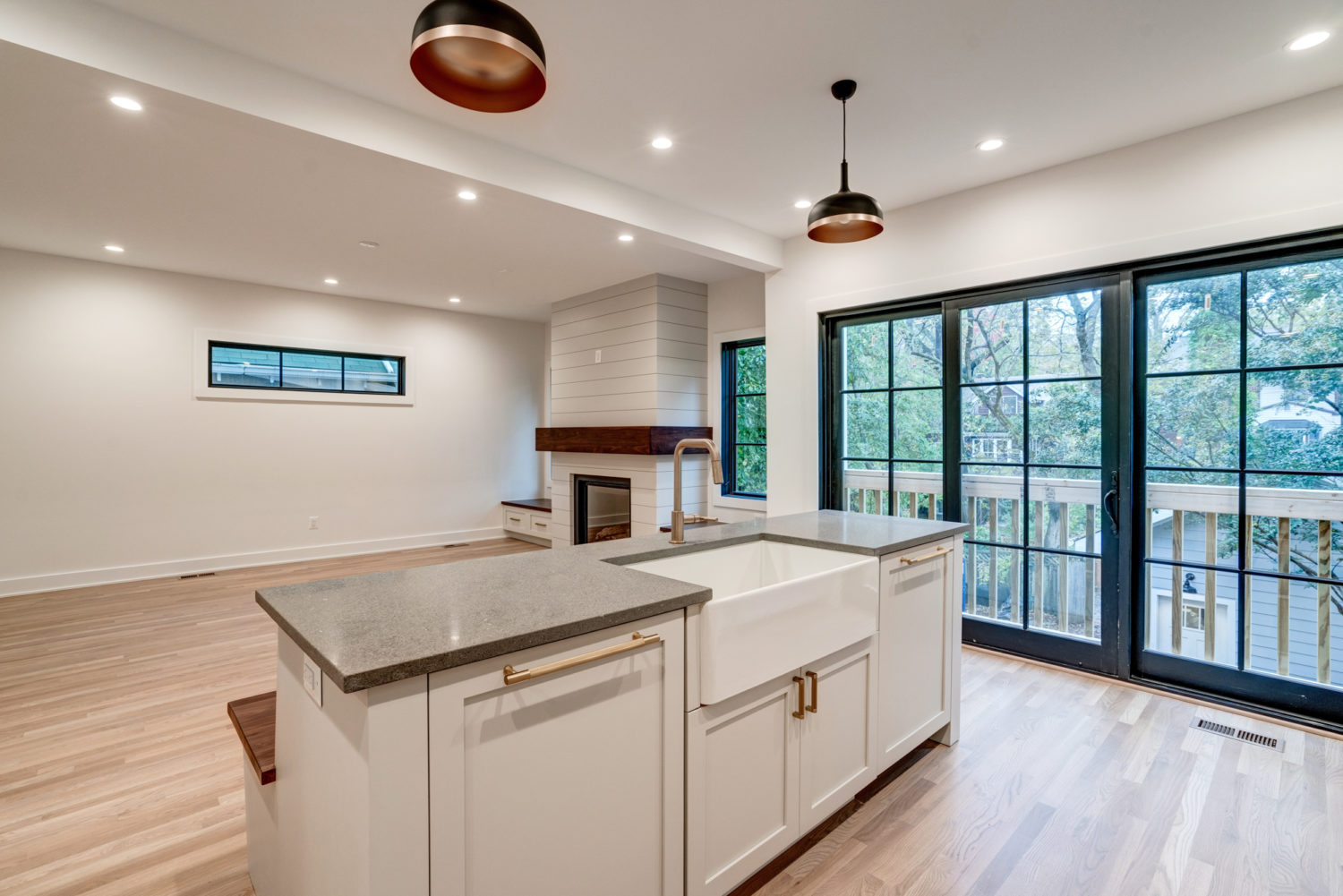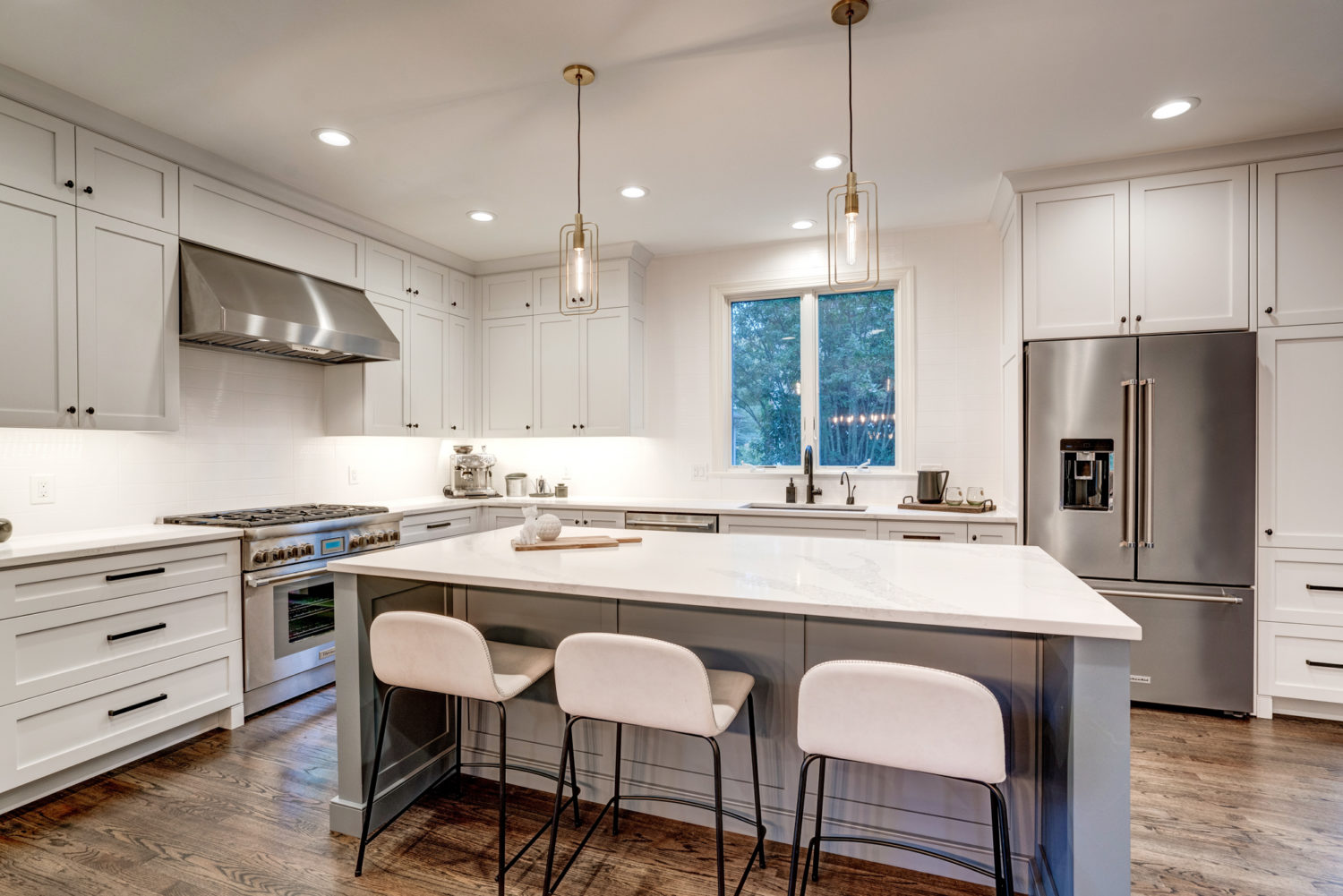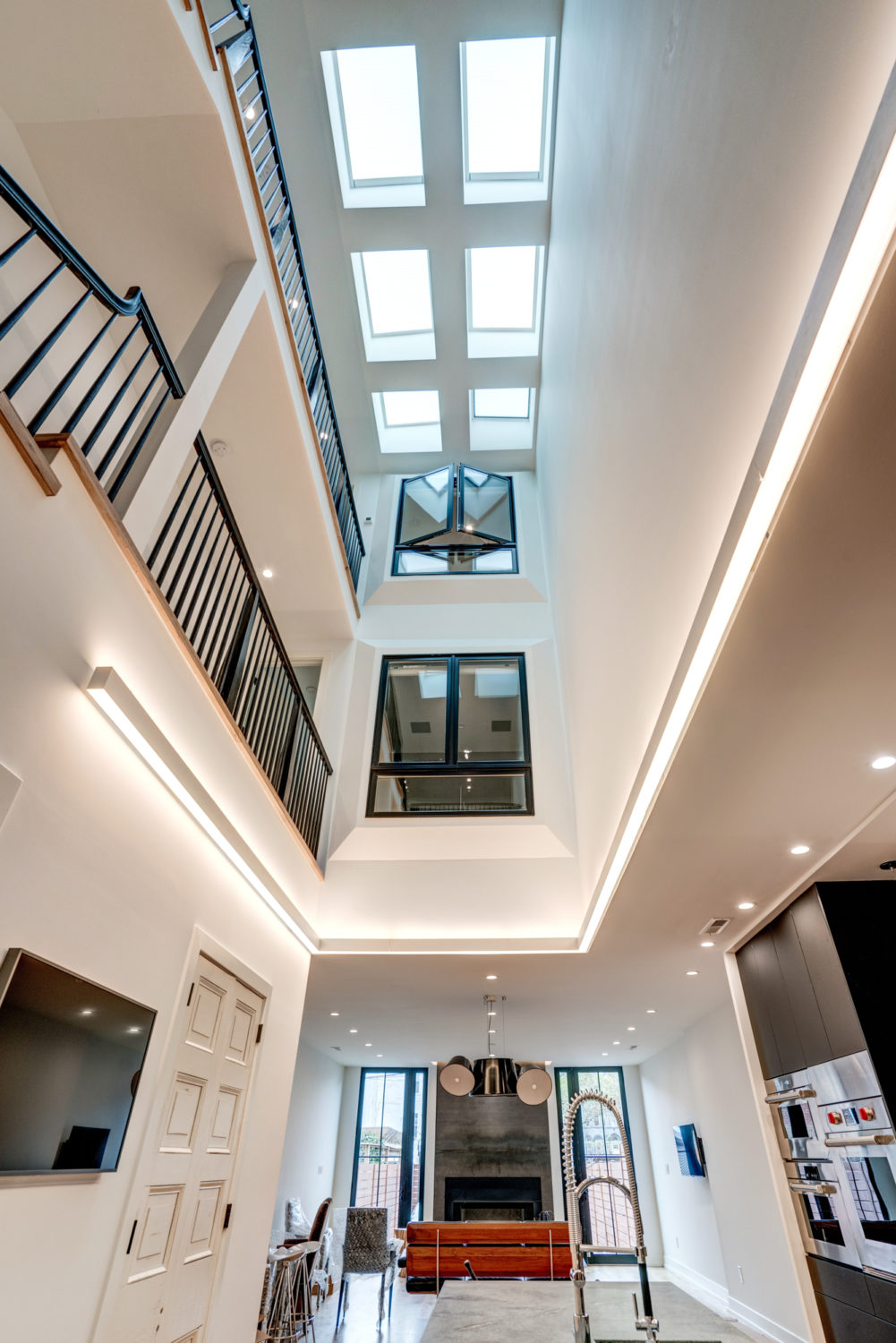What Is a Whole Home Renovation? A Complete Guide for DC Homeowners
Remodeling your entire home can feel like a daunting idea, but for many homeowners in Washington, DC, it’s the best way to transform a beloved property into a space that truly fits their lifestyle. Maybe you’ve already updated your kitchen or refreshed a bathroom, but when you start looking at your whole wish list, you realize it’s bigger than just one project. That’s when you step into whole home renovation territory.
In this guide, we’ll explain exactly what a whole home remodel includes, the benefits of renovating all at once vs. one project at a time, and the steps involved in making your home feel brand new—without leaving the neighborhood you love. By the end, you’ll understand whether a full renovation is right for you and how to begin planning with a trusted design-build partner.
Why Consider a Whole Home Renovation?
A whole home renovation is more than just a series of small updates—it’s a comprehensive transformation of your living space. Unlike single-room remodels, a full renovation typically involves upgrading at least half of your home’s interior. This allows your design-build team to rethink the entire layout, flow, and functionality of the house. By approaching the project holistically, your remodel becomes more than cosmetic; it creates a cohesive design that enhances everyday living and long-term value.
Projects that often fall under the scope of a whole home renovation include kitchen remodeling to create a modern and functional hub, bathroom renovations for comfort and luxury, basement remodeling to expand usable living space, master suite remodels for privacy and relaxation, and home additions that seamlessly extend your square footage. By combining these elements into one project, your contractor can ensure consistency in design and quality across the entire home.
For many homeowners in Washington, DC, the biggest reason to pursue a full renovation is location. If you love your neighborhood—whether it’s the vibrant streets of DC or nearby communities like Bethesda, Chevy Chase, or Silver Spring—a whole home remodel lets you stay rooted where you are while upgrading your home to match your lifestyle. Families often choose renovation over moving because they value their school district, commute, and community ties. Remodeling ensures you can enjoy the best of both worlds: the home you’ve always wanted in the neighborhood you already love.
Another key benefit of a whole home renovation is its impact on long-term investment value. When you plan your remodel with a holistic approach, you create not only a more livable and functional home but also a property that stands out in the market. A fully updated home in Washington, DC will often command higher resale appeal, making your renovation an investment in both comfort and equity. Unlike piecemeal projects that can result in mismatched finishes and styles, a complete remodel ensures your spaces work together to tell one cohesive design story.
So, what’s typically included in a whole home remodel? The kitchen is often the centerpiece. Whether you’re dreaming of a gourmet chef’s kitchen, an open-concept design, or more efficient storage, kitchen renovations in DC add long-term value while transforming the way you live day-to-day. Bathrooms have also become a major focus. From walk-in showers to heated flooring, bathroom remodels now provide spa-like retreats while also future-proofing homes with accessibility features.
Your basement offers some of the greatest potential for customization. A basement remodel can create space for a family theater, a home gym, guest suites, or even a private office. This not only maximizes your living space but also increases resale potential. For many homeowners, a master suite remodel is another priority. Combining a bedroom redesign with a spa-inspired bathroom, these remodels enhance privacy, comfort, and long-term enjoyment of the home.
Finally, when your home’s footprint no longer meets your needs, home additions provide the flexibility to expand without relocating. From kitchen bump-outs that create more cooking and gathering space to second-story additions that add entire new bedrooms, these expansions seamlessly integrate with the rest of your remodel.
Altogether, a whole home renovation is about more than modern finishes. It’s about creating a home that matches your lifestyle, maximizes your investment, and allows you to remain in the community you love. Whether you’re considering updates in DC, Bethesda, Chevy Chase, or Silver Spring, working with a trusted design-build partner ensures your vision becomes reality—and your home becomes one you’ll love for decades.
Should You Renovate All at Once or One Project at a Time?
Tackling Everything Together
The biggest advantage of a whole home renovation is efficiency. Completing everything at once allows your design-build team to create a unified vision, ensuring consistency in materials, finishes, and style. It also saves on labor, since trades like electricians and plumbers can handle multiple upgrades in one visit.
Spreading Out Projects Over Time
For some homeowners, staggering projects can feel more manageable. However, this often means living in a construction zone for years and paying more in the long run. For example, installing new flooring throughout the home in phases can cost more than replacing it all at once.
Timeline Considerations
A comprehensive renovation may require moving out temporarily, especially when kitchens and bathrooms are under construction simultaneously. While this requires planning, the benefit is returning to a fully finished, cohesive space.
Steps to Plan Your Whole Home Renovation
Step 1: Define Your Vision and Goals
List the spaces you want to update and identify pain points in your current layout. Do you need more storage? Better natural light? A modern open floor plan? Documenting your priorities helps guide the design process.
Step 2: Partner With a Design-Build Firm
Working with a Washington DC home remodeling contractor ensures you have a single team for both design and construction. This streamlines communication, reduces delays, and creates accountability throughout the project.
Step 3: Finalize Architectural Plans
Detailed drawings and renderings help you visualize the transformation before construction begins. These plans also ensure code compliance and smooth permitting. See how architectural design concepts shape the process.
Step 4: Prepare for Construction
Depending on the scope, your project may take several months. Discuss a realistic timeline with your contractor and make arrangements if temporary relocation is needed.
Step 5: Walk Through and Enjoy Your New Home
Once construction wraps up, you’ll have a transformed home that meets your lifestyle needs and adds lasting value.
Common Mistakes to Avoid
Mistake 1: Underestimating the Scope
Many homeowners think updating just the kitchen or bathrooms isn’t a “whole home remodel.” But once 50% or more of the interior is touched, it’s considered a full renovation. Understanding this distinction helps set realistic expectations.
Mistake 2: Ignoring Cohesion
Renovating one room at a time can lead to mismatched finishes and disjointed layouts. Whole home renovation ensures a seamless design.
Mistake 3: Skipping Professional Guidance
DIY projects can work for small upgrades, but whole home renovations require experienced professionals to manage structure, code compliance, and long-term durability.
Frequently Asked Questions
What counts as a whole home renovation?
Updating at least half of your home’s living space, often including kitchens, bathrooms, basements, and bedrooms.
Do I need to move out during construction?
For large-scale remodels, yes. This allows the work to progress faster and ensures your family isn’t living in unsafe conditions.
Is a whole home renovation better than moving?
If you love your location but need a new layout or modern upgrades, renovation is often more cost-effective and less disruptive than buying a new property.
How do I choose the right contractor?
Look for a firm that specializes in design-build remodeling, with experience in Washington DC whole home projects and a strong portfolio.
Conclusion
A whole home renovation is more than a facelift—it’s a complete transformation that allows you to reimagine your living space while staying in the neighborhood you love. From kitchens and bathrooms to basements and additions, every part of your home can be updated to fit your lifestyle and future goals.
If you’re ready to explore what’s possible, connect with the team at Hammer Design Build Remodel. Call us at 202-559-3990 or reach out through our contact page to schedule your consultation. Let’s create a home you’ll love for years to come.



